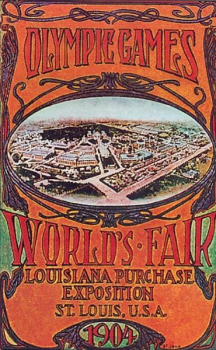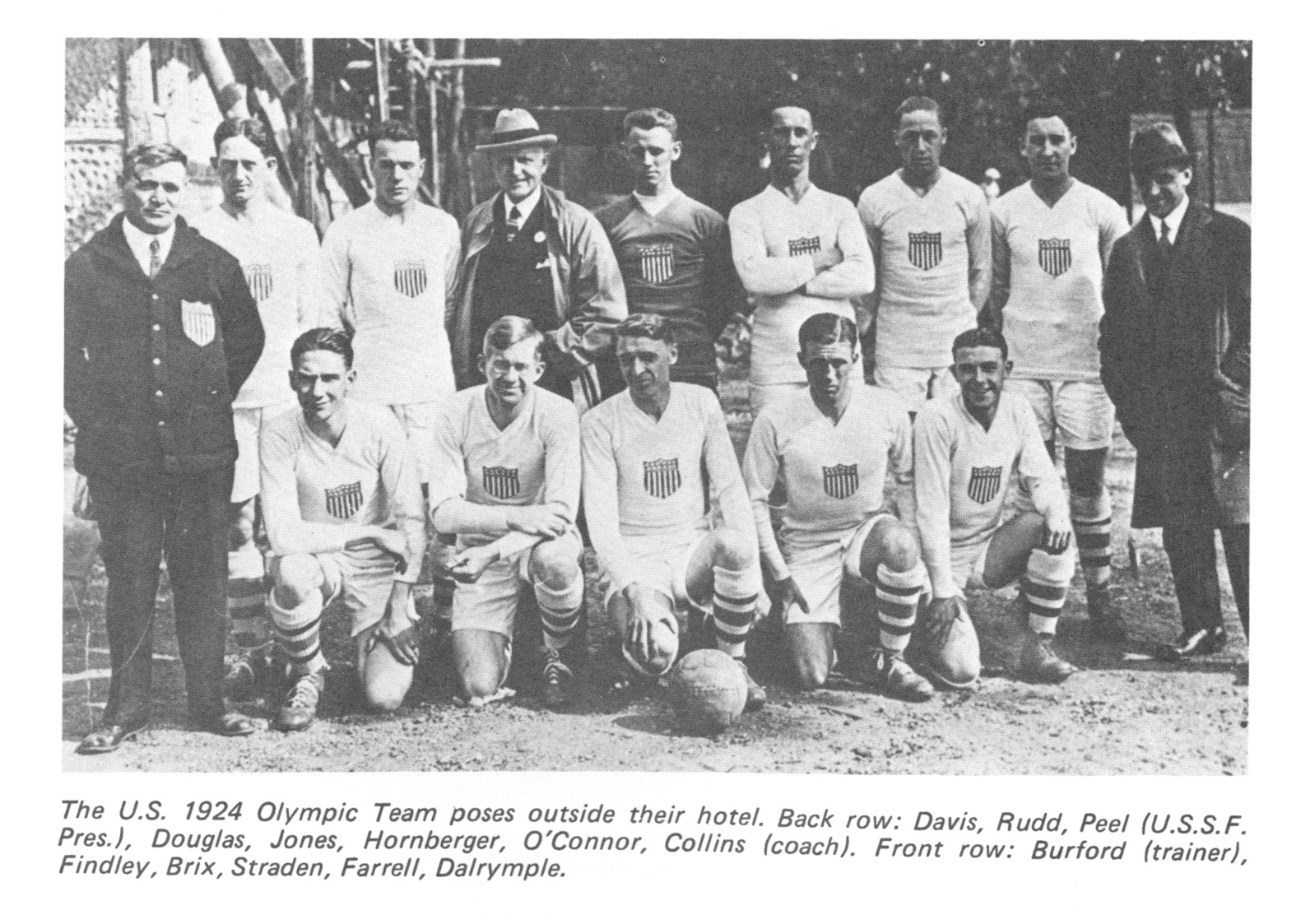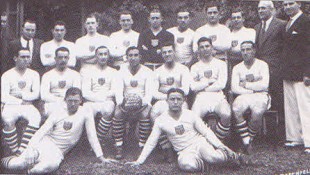 Featured image: 1930 US World Cup team
Featured image: 1930 US World Cup team
Every week in the lead-up to the first US game at the 2014 World Cup on June 16, we’ll be running a new installment of a multi-part series on the history of the US at the World Cup. Our series begins with how the first World Cup came to be in 1930 and a look at the US national team’s international play before then.
International soccer before FIFA and the World Cup
The first ever international soccer match took place between Scotland and England on Nov. 30, 1872 at the West of Scotland Cricket Club’s ground in Partick, Scotland, an area of Glasgow, and ended in a scoreless draw. The first-ever international tournament was the British Home Championship, founded in 1884. One year later, the first-ever non-European international was played in Newark, New Jersey, and ended in a 1-0 victory for Canada over the US.
As the rules of the game as first formalized by England’s FA began to spread around the world, interest in the game gained momentum and soon coincided with development of the Olympic movement. At the first modern Olympics in Athens in 1896, soccer was not included in the program of events. While some sources claim that an unofficial soccer tournament was organized, no documents from 1896 exist to verify this claim.
Four years later at the Paris Olympics, and then at the St. Louis Games in 1904 (both of which were organized in conjunction with the World’s Fair), soccer was again played, but the participating teams were amateur club teams. In the case of the the St, Louis Games, the soccer tournament was something of an afterthought, taking place three months after the other Olympic events and featuring only three teams. Two were hastily organized St. Louis club teams, one was Canada’s “national champions,” Galt FC, the tournament champion. It would not be until the 1908 London Olympics that truly national sides would participate in the Olympic tournament, with eventual tournament champion Great Britain facing teams from Denmark, Netherlands, and Sweden, as well as French “A” and “B” teams.
Meanwhile, as both soccer and the Olympics took root in the world’s sports consciousness, forward thinkers such as French sports journalist Robert Guerin saw the need for the establishment of an organizing body to facilitate international play. At the time, the soccer nations of the world looked to England and the FA as the leading light of the game. When the FA proved to be slow in assuming the role of organizing international soccer, eight interested soccer associations from across Europe – Germany, Sweden, Belgium, Switzerland, Spain, Denmark, the Netherlands and France — took matters into their own hands and established FIFA, the Federation Internationale de Football Association on May 21, 1904, with Guerin as its first president.
The creation of the World Cup
At first, rather than organize its own championship, FIFA was content to let soccer at the Olympics represent the world championship. Following the First World War, however, disputes over the inclusion of amateur versus professional players led to a revival of Guerin’s original idea of an “open” world championship. FIFA secretary Henri Delaunay said in 1926, “Today international football can no longer be held within the confines of the Olympics, and many countries where professionalism is now recognized and organized cannot any longer be represented there by their best players.”
 Following the success of soccer at the 1928 Olympics in Amsterdam, where it was the most popular sport, FIFA, led by president Jules Rimet, moved to create the first World Cup, to be held in 1930. Because the World Cup would allow professional players to participate, the football associations of the British Isles, who still clung to the amateur ideal in international competition, resigned from FIFA.
Following the success of soccer at the 1928 Olympics in Amsterdam, where it was the most popular sport, FIFA, led by president Jules Rimet, moved to create the first World Cup, to be held in 1930. Because the World Cup would allow professional players to participate, the football associations of the British Isles, who still clung to the amateur ideal in international competition, resigned from FIFA.
The five candidates to host the first World Cup were Italy, the Netherlands, Spain, Sweden and Uruguay. Uruguay, which had won the 1924 and 1928 Olympic gold medals and would be celebrating its 100th anniversary as a country in 1930, was selected as the host. That Uruguay offered to pay for the traveling and living expenses of each participating country and to build a new stadium surely helped.
The four countries that had not been selected to host the first World Cup refused to send teams to the tournament. Austria, Hungary, Germany, Switzerland and Czechoslovakia also refused to send teams and for a time the relative lack of participation by European teams made it seem that the World Cup might be over before it had begun. Eventually, four European teams — Belgium, France, Romania, and Yugoslavia — made the trip to join Argentina, Brazil, Bolivia, Chile, Mexico, Paraguay, Peru, the United States, and host country Uruguay.
Early US international games before the first World Cup
After the 1904 Games in St. Louis, the US would not a appear in another Olympic tournament until the 1924 Paris Games, although a US team made the journey to Scandinavia for a tour against club and national team sides in 1916, three years after the founding of the United States of America Football Association (USFA, known today as the US Soccer Federation).
At the Paris Games, the US defeated Estonia 1-0 on May 25, 1924 before falling 3-0 to Uruguay three days later. Following the tournament, the US played international friendlies against Poland and Ireland, winning in Warsaw, 3-2, on June 10, 1924, and losing 3-1 in Dublin on June 16, 1924. (Click here to view footage from the US team’s visit to Ireland.) On the US team from Philadelphia clubs were Arthur Rudd, William Demko, Andy Stradan, and Herbert Wells (Fleischer Yarn); Irving Davis and Henry Farrell (Fairhill FC); and Ray Hornberger and Samuel Dalrymple (Disston FC). Stradan scored the lone US goal of the tournament.
An attempt was made beginning in 1925 to organize an annual series of games against Canada, but the effort proved short lived. After losing 1-0 in Montreal on June 27, 1925, the US defeated Canada 6-1 at Brooklyn’s Ebbets Field on Nov. 8. One year later, The US again defeated Canada at Ebbets Field on Nov. 6, 1926, this time 6-2. After that the series was abandoned. Among those who represented the US in the games were Cy Davis (Philadelphia FC) and Dave Ferguson, Bill Carnihan, Archie Stark, Edmund Smith, and Malcolm Goldie (Bethlehem Steel FC). Stark scored five of the US goals in the 6-1 win over Canada.
The US appeared at the 1928 Olympics in Amsterdam and were quickly eliminated from the knockout tournament by Argentina, who were commanding 11-2 winners over the Americans on May 30, 1928. (Click here for footage from the game.) Philadelphia-area clubs were also represented on the national team squad, which was managed by USFA second vice president Elmer Schroeder of Philadelphia, and coached by fellow Philadelphian George Buford. Among those on the squad were Albert Cooper (Trenton FC), Harry Smith and Francis Ryan (Lighthouse FC), and John Deal (Wolfenden Shore FC).
Following the Olympic tournament, the US again faced Poland in Warsaw, playing to a 3-3 draw on June 10, 1928. Lighthouse’s Francis Ryan scored the US team’s first goal.
A quick look at some background to the US team: the ASL, the USFA and the American Soccer Wars
Soccer in the US after the First World War was booming. To capitalize on the boom, the professional American Soccer League (ASL) was formed in 1921 with teams from the National Association Football League and the Southern New England Soccer League.
Backed by wealthy investors with the resources to attract and pay for the best soccer talent in America, the league was also able to attract players from European leagues with offers of better pay than what they could hope to earn at home, as well as tours by top European clubs. For a time, the ASL was second only to Major League Baseball as the most popular professional team sport in the US.
But the success of the ASL led to disputes with the USFA over the status of international players who had broken contracts in their native countries to play in the ASL (despite the fact that the ASL appealed for assistance from the USFA when ASL players broke their contracts to play in Europe). Also at issue was the sharing of profits from exhibition matches against touring foreign clubs with the association, some of which enjoyed attendance of 30,000 or more. This dispute grew into what is now commonly referred to as the American Soccer War.
The ASL also took the view that participation in the National Challenge Cup (now known as the US Open Cup), which included both professional and amateur clubs and was the USFA’s prime source of regular revenue, interfered with money-making ASL matches, and voted to no longer take part in the Cup competition. The view was not shared by all ASL clubs and some of the leading clubs, including Bethlehem Steel FC, decided to leave the ASL and, with the help of the USFA, formed the Eastern Professional Soccer League. When the ASL voted to suspended and fine the breakaway clubs, the USFA was forced to assert its authority over the American professional game and the association suspended the ASL. Soon other leagues, including the Southern New York Football Association, joined the ASL in challenging the USFA.
The position of the breakaway leagues led by the ASL began to be eroded when the Scottish FA, its stature at the time second only to the English FA, recognized the authority of the USFA as the preeminent authority of American soccer. Finally, in October, 1929, the various parties in the dispute were able to agree to recognize the authority of the USFA. But the damage to the professional game — along with the growing hardships of the Great Depression — had been done: financial backers withdrew their support of clubs and foreign players returned to play in their home countries. In 1933, the ASL folded.
But the importance of the ASL to the 1930 US World Cup squad would be undeniable. The coach, Robert Millar (who had played for Tacony FC, Philadelphia Hibernian, and Bethlehem Steel), team trainer Jock Coll, and eleven of the players chosen for the US squad, came from ASL teams.
On Thursday, June 12, 1930, the US team boarded the SS Munargo in Hoboken and disembarked for the inaugural World Cup.
Our series on the US at the World Cup will continue next week.
A version of this article was originally published on April 7, 2010.



La gran selección de fútbol USA 1930 que hizo buenos encuentros con Bélgica y Paraguay goleando a los dos por 3 a 0 La foto de arriba si no me equivoco o si no me corrigen parados los jugadores de izquierda a derecha: Jim Gentle, Alexander Wood, George Moorhouse, Jimmy Douglas, Billy Gonsalves, NN, Andy Auld.
En el centro: Ralph Tracy, Jimmy Gallagher, NN, Tom Florie, Bert Patenaude, Arnie Oliver, Bart McGhee
abajo: Jim Brown, y Phil Slone. Me faltan identificar a dos jugadores y a los dirigentes que aparecen en la foto. Atentamente Carlos de Perú.
There is an evidence for the football matches during the 1896 Olympics. It was a demonstration sport. The first Greek football referee was interviewed back in 1970 and he tells about that.